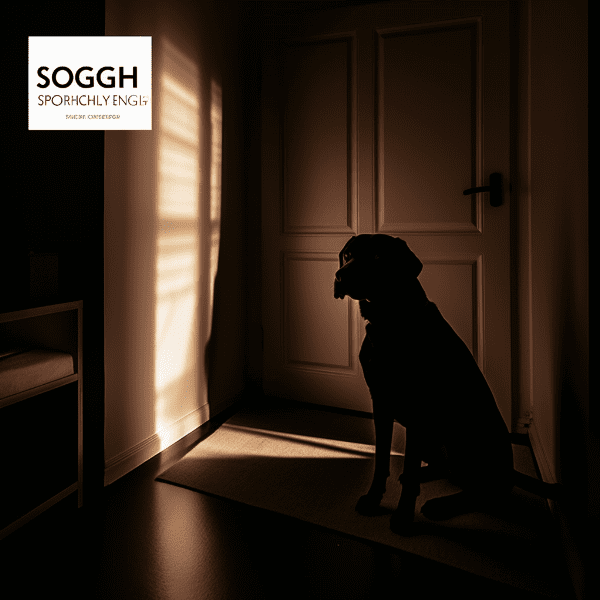Table of Contents
- Understanding Puppy Separation Anxiety
- Identifying Signs of Separation Anxiety in Your Puppy
- Preventing Puppy Separation Anxiety: Early Training Techniques
- Creating a Safe Space for Your Puppy
- Making Departures and Arrivals Calm and Low-Key
- Gradually Increasing Time Away from Your Puppy
- Providing Engaging Toys and Activities
- Using Positive Reinforcement to Encourage Independence
- When to Consider Professional Help for Your Puppy
- Sticking to a Consistent Routine to Help Your Puppy Cope
Understanding Puppy Separation Anxiety
Separation anxiety is a common behavioral issue that many puppies experience. It is the feeling of distress that arises when puppies are separated from their owners or the people they have become attached to. This feeling can manifest in a variety of ways, including whining, barking, destructive behavior, and even attempts to escape.
Causes of Puppy Separation Anxiety
There are several reasons why puppies may experience separation anxiety. One of the main reasons is that puppies are social animals and they thrive on companionship. When they are separated from their owners or the people they have bonded with, they can become anxious and distressed. Additionally, puppies who have experienced a traumatic event, such as being abandoned or separated from their littermates, may be more prone to separation anxiety.
Symptoms of Puppy Separation Anxiety
The symptoms of separation anxiety in puppies can vary, but they often include excessive barking, whining, or howling. Puppies may also engage in destructive behavior, such as chewing or digging, in an attempt to escape or alleviate their anxiety. Additionally, some puppies may refuse to eat or drink when their owners are away, or they may become overly excited and hyperactive when their owners return.
Consequences of Untreated Separation Anxiety
If left untreated, separation anxiety in puppies can lead to more severe behavioral problems. Puppies may become more destructive, and their anxiety may escalate, leading to injury or damage to your home. Additionally, untreated separation anxiety can cause stress and emotional turmoil for both you and your puppy. It’s important to address separation anxiety as soon as possible to prevent it from becoming a more significant issue.
In the following sections, we’ll discuss various techniques and strategies to help your Puppy overcome separation anxiety and feel more comfortable and secure when you’re not home. By implementing these tips, you can help your puppy learn to enjoy spending time alone and reduce their anxiety levels.
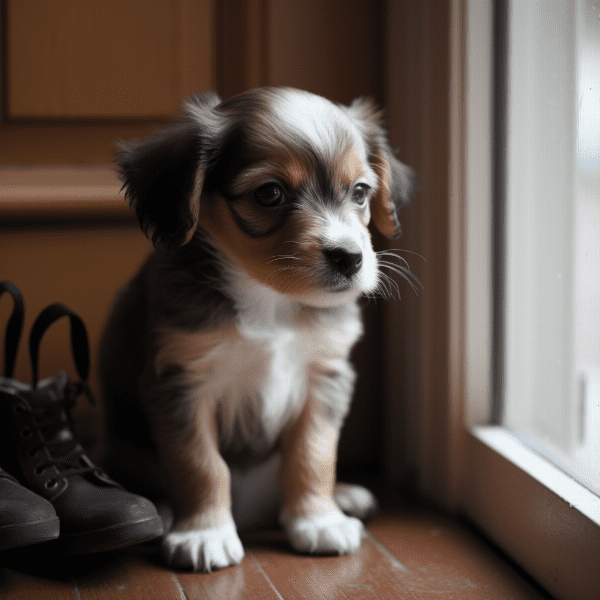
Identifying Signs of Separation Anxiety in Your Puppy
It’s important to be able to recognize the signs of separation anxiety in your puppy so that you can take steps to address the issue. Here are some common signs that your puppy may be experiencing separation anxiety:
Overly Excited Behavior
Some puppies may become overly excited and hyperactive when their owners return home after being away. While this behavior may seem like a sign of happiness or excitement, it can actually be a sign that your puppy is experiencing anxiety and stress when you’re not home.
Physical Symptoms
In some cases, puppies may experience physical symptoms as a result of separation anxiety. These can include panting, drooling, and trembling. If you notice any of these symptoms in your puppy, it’s important to take steps to address their anxiety levels.
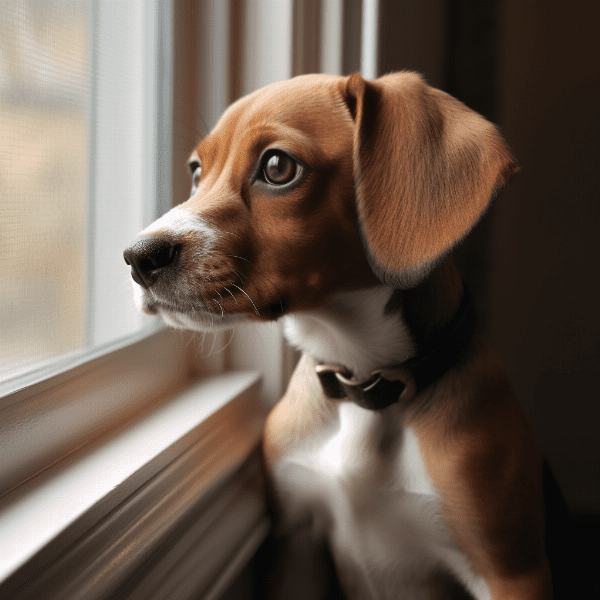
Preventing Puppy Separation Anxiety: Early Training Techniques
Preventing separation anxiety in puppies is much easier than treating it later on. By incorporating early training techniques, you can help your puppy learn to cope with being alone and prevent separation anxiety from developing. Here are some effective training techniques to help prevent Puppy separation anxiety:
Crate Training
Crate training can be an effective way to prevent separation anxiety in puppies. When done correctly, crate training provides your puppy with a safe and secure space that they can retreat to when they need some alone time. It’s important to introduce your puppy to the crate gradually and make it a positive experience.
Desensitization
Desensitization involves exposing your puppy to various stimuli, such as the sound of a door opening or closing, in a controlled environment. By gradually increasing the intensity of the stimuli, your puppy can learn to cope with these sounds and become less anxious when you’re not home.
Consistent Routine
Puppies thrive on routine, and a consistent schedule can help prevent separation anxiety from developing. Try to establish a routine for feeding, playtime, and bedtime, and stick to it as closely as possible. This will help your puppy feel more secure and comfortable in their environment.
By incorporating these early training techniques, you can help prevent separation anxiety in your puppy and promote healthy, independent behavior. The following sections will provide additional tips and strategies for dealing with separation anxiety in puppies who have already developed the condition.

Creating a Safe Space for Your Puppy
Creating a safe space for your puppy can help reduce their anxiety levels and promote feelings of security and comfort. Here are some tips for creating a safe space for your furry friend:
Choose a Quiet Location
When choosing a location for your puppy’s safe space, it’s important to choose a quiet area that is free from distractions. This could be a spare room, a corner of your living room, or a quiet area of your bedroom.
Provide Comfortable Bedding
Make sure your puppy’s safe space is equipped with comfortable bedding, such as a soft bed or blanket. This will provide your puppy with a cozy and comfortable space to relax in.
Add Familiar Items
To help your puppy feel more comfortable and secure in their safe space, add familiar items such as their favorite toys or a piece of your clothing that smells like you. This will help your puppy feel less anxious and more at ease when you’re not home.
Use Calming Scents
Using calming scents such as lavender or chamomile can help reduce your puppy’s anxiety levels and promote relaxation. Consider using a diffuser or sprays that contain these scents in your puppy’s safe space.
Make It Inviting
Make your puppy’s safe space inviting and fun by including toys and treats. This will help your puppy associate their safe space with positive experiences and feelings of comfort.

Making Departures and Arrivals Calm and Low-Key
When leaving or returning home, it’s important to keep departures and arrivals calm and low-key to help reduce your puppy’s anxiety levels. Here are some tips to help make departures and arrivals less stressful for your puppy:
Practice Short Departures
Before leaving your puppy alone for an extended period of time, practice short departures to help your puppy learn that you will always return. Start by leaving your puppy alone for just a few minutes and gradually increase the length of time you’re away.
Avoid Excited Greetings
When returning home, avoid excited greetings and instead greet your puppy calmly and quietly. This will help your puppy learn that departures and arrivals are normal and not something to become overly excited about.
Keep Goodbyes Brief
When leaving your puppy alone, keep goodbyes brief and avoid making a big deal out of it. This will help your puppy learn that departures are not a cause for anxiety or distress.
Use White Noise
Using white noise, such as a fan or a noise machine, can help drown out external noises that may cause your puppy to become anxious or distressed.
Provide a Distraction
Before leaving your puppy alone, provide them with a distraction such as a puzzle toy or a treat. This will help keep your puppy occupied and reduce their anxiety levels.

Gradually Increasing Time Away from Your Puppy
Gradually increasing the amount of time your puppy spends alone can help them learn to cope with separation anxiety and become more independent. Here are some tips to help gradually increase your puppy’s time alone:
Start Slowly
Start by leaving your puppy alone for just a few minutes and gradually increase the length of time you’re away. This will help your puppy learn that being alone is normal and nothing to be afraid of.
Monitor Your Puppy’s Behavior
Monitor your puppy’s behavior when you’re away to determine how long they can comfortably be left alone. If your puppy becomes anxious or distressed, it may be a sign that you need to reduce the amount of time you’re away.
Mix Up Your Routine
Mixing up your routine can help prevent your puppy from becoming overly attached to a specific routine or time of day. This can help reduce separation anxiety and promote feelings of independence.
Use Desensitization Techniques
Using desensitization techniques, such as leaving your puppy alone in a controlled environment, can help them become more comfortable with being alone. Gradually increasing the length of time you’re away during these sessions can help your puppy become more independent.
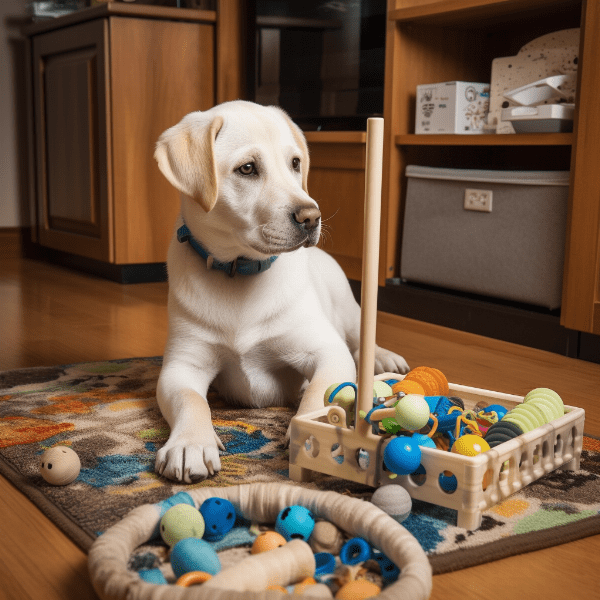
Providing Engaging Toys and Activities
Providing your puppy with engaging toys and activities can help keep them occupied and reduce their anxiety levels when you’re not home. Here are some tips for providing engaging toys and activities for your furry friend:
Puzzle Toys
Puzzle toys, such as treat-dispensing toys, can help keep your puppy occupied and engaged when you’re not home. These toys require your puppy to work for their treats, which can help reduce anxiety levels and promote feelings of independence.
Interactive Toys
Interactive toys, such as balls that bounce or squeak, can provide your puppy with entertainment and stimulation when you’re not home. These toys can help keep your puppy active and engaged, which can help reduce anxiety levels.
Chewing Toys
Chewing toys, such as chew bones or rubber toys, can help relieve stress and anxiety in puppies. Chewing can help release endorphins, which can have a calming effect on your puppy.
Rotating Toys
Rotating your puppy’s toys on a regular basis can help prevent boredom and reduce anxiety levels. Introducing new toys or rotating existing toys can help keep your puppy engaged and stimulated.
Training Activities
Training activities, such as teaching your puppy new commands or tricks, can help keep their minds active and engaged. This can help reduce anxiety levels and promote feelings of independence.
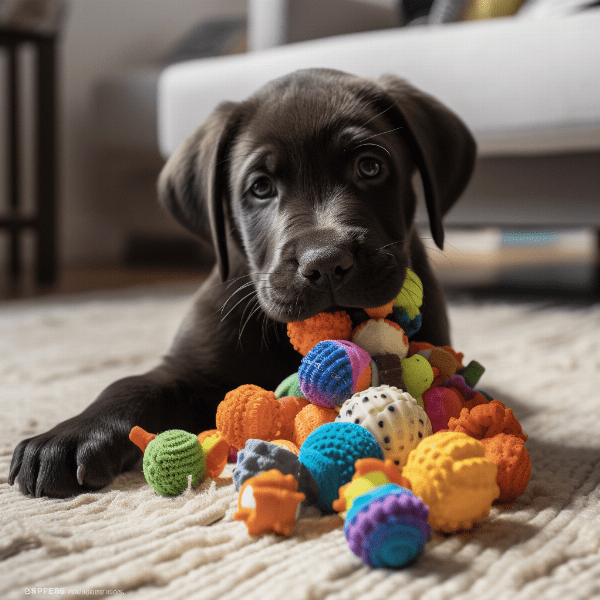
Using Positive Reinforcement to Encourage Independence
Using positive reinforcement is an effective way to encourage your puppy to become more independent and confident when you’re not home. Here are some tips for using positive reinforcement to promote independence:
Reward Independent Behavior
When your puppy exhibits calm and independent behavior, such as spending time in their safe space or playing with toys, reward them with treats, toys, or praise. This will help reinforce positive behavior and encourage your puppy to become more independent.
Avoid Punishment
Punishing your puppy for exhibiting separation anxiety can actually make the problem worse. Instead, focus on positive reinforcement to encourage your puppy to become more independent.
Use Treats and Toys
Using treats and toys can be a powerful motivator for puppies. When your puppy exhibits calm and independent behavior, reward them with a treat or a toy to help reinforce positive behavior.
Provide Verbal Praise
Verbal praise, such as saying “good job” or “good boy/girl” can also be an effective way to reinforce positive behavior and encourage your puppy to become more independent.
Be Consistent
Consistency is key when using positive reinforcement to encourage independence. Make sure to reward your puppy consistently for exhibiting calm and independent behavior, and avoid rewarding anxious or clingy behavior.

When to Consider Professional Help for Your Puppy
In some cases, separation anxiety in puppies can be severe and require professional help. Here are some signs that it may be time to consider seeking professional help for your furry friend:
Symptoms Persist or Worsen
If your puppy’s separation anxiety symptoms persist or worsen despite your best efforts to address the issue, it may be time to seek professional help. A qualified animal behaviorist or trainer can provide you with additional guidance and support.
Inappropriate Elimination
If your puppy is experiencing inappropriate elimination as a result of separation anxiety, it may be a sign that professional help is needed. A behaviorist or trainer can help you identify the underlying cause of the behavior and develop a plan to address it.
You’re Feeling Overwhelmed
If you’re feeling overwhelmed or stressed by your puppy’s separation anxiety, it may be time to seek professional help. A behaviorist or trainer can provide you with the support and guidance you need to help your puppy overcome separation anxiety.
By seeking professional help when necessary, you can ensure that your puppy receives the care and support they need to overcome separation anxiety and learn to enjoy spending time alone.
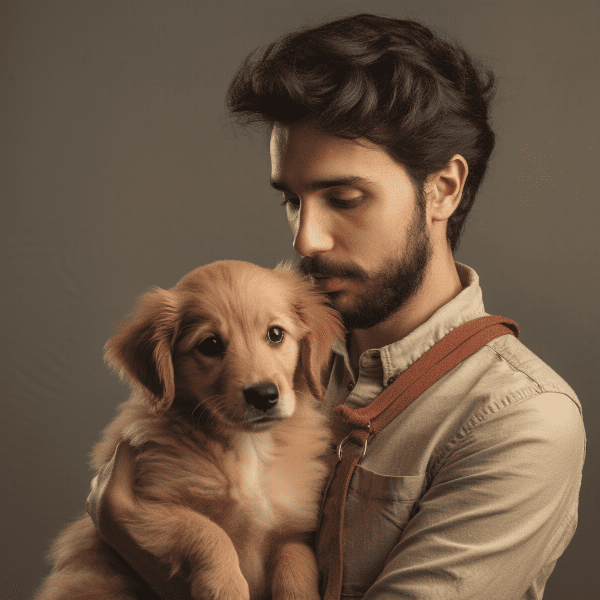
Sticking to a Consistent Routine to Help Your Puppy Cope
Sticking to a consistent routine can help your puppy cope with separation anxiety and feel more secure and comfortable when you’re not home. Here are some tips for maintaining a consistent routine for your furry friend:
Set a Schedule
Set a daily schedule for your puppy that includes regular feeding times, playtime, and exercise. This can help your puppy feel more secure and comfortable, and can also prevent boredom and anxiety.
Stick to a Routine
Stick to a routine as much as possible, even on weekends or days off. This can help your puppy feel more secure and comfortable, and can also prevent confusion or anxiety.
Keep Departures Low-Key
When leaving your puppy alone, keep departures low-key and consistent. This can help your puppy feel more secure and prevent anxiety or distress.
Create a Safe Space
Create a safe space for your puppy that is consistent and always available. This can help your puppy feel more secure and comfortable when you’re not home.
Use Positive Reinforcement
Use positive reinforcement to encourage your puppy to stick to their routine. Reward calm and independent behavior with treats or toys, and avoid rewarding anxious or clingy behavior.
By sticking to a consistent routine, you can help your puppy cope with separation anxiety and feel more secure and comfortable when you’re not home. The following sections will provide additional tips and strategies to help your puppy overcome separation anxiety and learn to enjoy spending time alone.



